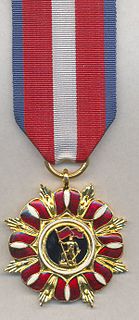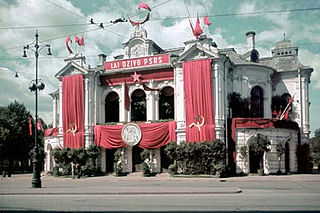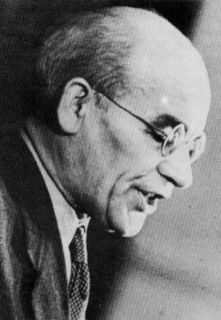 W
WThe Polish People's Republic was a country in Central Europe that existed from 1947 to 1989 as the predecessor of the modern Republic of Poland. With a population of approximately 37.9 million near the end of its existence, it was the second most-populous communist and Eastern Bloc country in Europe. Having a unitary Marxist–Leninist government, it was also one of the main signatories of the Warsaw Pact alliance. The largest city and official capital since 1947 was Warsaw, followed by the industrial city of Łódź and cultural city of Kraków. The country was bordered by the Baltic Sea to the north, the Soviet Union to the east, Czechoslovakia to the south, and East Germany to the west.
 W
WThe history of Poland from 1945 to 1989 spans the period of communist rule imposed over Poland after the end of World War II. These years, while featuring general industrialization, urbanization and many improvements in the standard of living, were marred by early Stalinist repressions, social unrest, political strife and severe economic difficulties.
 W
WThe 1981 strike at the Piast Coal Mine in Bieruń was the longest underground protest in the postwar history of Polish mining, and the longest strike of the martial law in Poland. It began on December 14, 1981, one day after introduction of the martial law, and ended on December 28, when approximately 1,000 protesting miners emerged from the mine. They spent two weeks underground, including Christmas, and ended the protest after the government guaranteed their safety.
 W
WBon Towarowy PeKaO checks were substitute legal tender used in the People's Republic of Poland. The Polish government, needing hard foreign currency, introduced them in 1960. Citizens of Poland had to exchange foreign currency they had into these notes, issued by the government-controlled Bank Pekao. They were only accepted in special shops in Poland where one could buy restricted, imported goods. Outside of Poland, bony had no value and were not regarded as legal tender.
 W
WBorder Protection Troops, also known under its English abbreviation BPT, was the border guard service of the People's Republic of Poland from 1945 to 1989. During its 46 years of existence, it has repeatedly changed its structural and service subordination, passing from the Ministry of National Defense through the Ministry of Public Security to the Ministry of the Interior, and vice versa, to remain under the Ministry of Interior since 1972. Border Protection Troops soldiers were subject to the same rules and regulations as those of other soldiers of the Polish People's Republic. As a result of political transformation and the setup of the Third Polish Republic, the Border Protection Troops were disbanded on May 16, 1991, and the Border Guard was created in their place as a preventive-type police formation established to protect Poland's borders.
 W
WCensorship in Communist Poland was primarily performed by the Polish Main Office of Control of Press, Publications and Shows, a governmental institution created in 1946 by the pro-Soviet Provisional Government of National Unity with Stalin's approval and backing, and renamed in 1981 as the Główny Urząd Kontroli Publikacji i Widowisk (GUKPiW). The bureau was liquidated after the fall of communism in Poland, in April 1990.
 W
WThe Constitution of the Polish People's Republic was a supreme law passed in communist-ruled Poland on 22 July 1952. It superseded the post-World War II provisional Small Constitution of 1947, which in turn replaced the pre-war April Constitution of 1935.
 W
WThe Crooked Circle Club was a discussion club for young intelligentsia in Poland. It was founded in 1955, the first meeting taking place in an apartment on Crooked Circle Street in Warsaw. It had connections with the Po prostu magazine. The club then expanded, and met regularly at the Old Town Market Place, Warsaw every Thursday at six in the evening. The club played an important role during Polish October and the de-Stalinization of Poland, organizing other clubs and contacts. The club was heavily involved in the 1957 Polish legislative election. Matters suppressed by government censorship were discussed openly and frankly in the club. After First Secretary Władysław Gomułka tightened his control in 1957, other discussion clubs were closed and the Crooked Circle Club was challenged as well though it survived as the only discussion club in Poland managed by its director Jan Józef Lipski. The club closed in 1962.
 W
WThe "cursed soldiers" or "indomitable soldiers" is a term applied to a variety of anti-Soviet and anti-communist Polish resistance movements formed in the later stages of World War II and its aftermath by members of the Polish Underground State. This all-encompassing term for a widely heterogeneous movement was introduced in early 1990s.
 W
WThe Felix Dzerzhinsky Political-Military Academy – was a Soviet style military academy, established by the communist government, in the People's Republic of Poland. It operated in Warsaw from 1951 until 1990, and was an institution with high school status, founded for indoctrination of higher command of military forces of Communist Poland. The alumni of the Political-Military Academy became political commissars in the Army.
 W
WThe Giedroyc doctrine or Giedroyc–Mieroszewski doctrine was a political doctrine that urged reconciliation among Central and Eastern European countries. It was developed by postwar Polish émigrés, and was named for Jerzy Giedroyc, a Polish émigré publicist, with significant contributions by Juliusz Mieroszewski for whom it is also sometimes named.
 W
WHistory of Pomerania (1945–present) covers the history of Pomerania during World War II aftermath, the Communist and since 1989 Democratic era.
 W
WThe Karlino oil eruption was an oil well blowout that took place on December 9, 1980, near Karlino, a town located in Pomerania in northern Poland, near the Baltic Sea coast. The eruption and the fire that followed it put an end to the hope of Poland becoming a "second Kuwait". It took more than a month for Polish, Soviet and Hungarian firefighters to completely extinguish the fire. The eruption was the result of an extensive search for underground oil deposits that took place in the area in 1980.
 W
WMilicja Obywatelska, in English known as the Citizens' Militia and commonly abbreviated to MO, was the national police organization of the Polish People's Republic. It was established on 7 October 1944 by the Polish Committee of National Liberation, effectively replacing the pre-war police force. The Citizen's Militia would remain the predominant means of policing in Poland until 10 May 1990, when it was transformed back into Policja.
 W
WThe Ministry of Public Security, commonly known as UB or later SB, was the secret police, intelligence and counter-espionage agency operating in the Polish People's Republic. From 1945 to 1954 it was known as the Department of Security, and from 1956 to 1990 as the Security Service.
 W
WThe Northern Group of Forces was the military formation of the Soviet Army stationed in Poland from the end of Second World War in 1945 until 1993 when they were withdrawn in the aftermath of the fall of the Soviet Union. Although officially considered Polish allies under the Warsaw Pact treaty, they were seen by some Poles as a Soviet occupation force.
 W
WThe Okęcie Airport incident was a dispute between players and technical staff of the Poland national football team on 29 November 1980, starting at the team hotel in Warsaw and climaxing at Okęcie Airport. As an incident of insubordination, when strikes and other forms of civil resistance were intensifying in communist Poland, it caused a domestic press storm, and led to the suspension of several prominent players and the resignation of Ryszard Kulesza, the team manager.
 W
WThe Order of the Banner of Work was a governmental award in Poland during the 20th-century era of the People's Republic of Poland, a former Marxist-Leninist state.
 W
WOrder of the Builders of People's Poland was the highest civil decoration of Poland in the times of the People's Republic of Poland.
 W
WORMO, or the Volunteer Reserve of the Citizens' Militia, was a paramilitary organization and voluntary support brigade of the communist police force, the Citizen's Militia (MO). ORMO was founded in the Polish People's Republic in 1946, and disbanded in 1989 by the Sejm after the collapse of the communist bloc in Central and Eastern Europe.
 W
WPewex was a chain of shops founded in 1972, during the Communist era in Poland that accepted payment only in United States dollars and other hard currencies, instead of the country's indigenous currency, the Złoty.
 W
WThe Council of State of the Republic of Poland was introduced by the Small Constitution of 1947 as an organ of executive power. The Council of State consisted of the President of the Republic of Poland as chairman, the Marshal and Vice-marshals of the Sejm, President of the Supreme Audit Office, and potential other members. The Council of State had the power to approve decrees issued by the Council of Ministers, exercise supreme control over the local national councils, approve promulgation of laws concerning the budget and military draft, declare a state of emergency and martial law, initiate legislation, and others.
 W
WThe Polish government-in-exile, officially known as the Government of the Republic of Poland in exile, was the government in exile of Poland formed in the aftermath of the Invasion of Poland of September 1939, and the subsequent occupation of Poland by Germany and the Soviet Union, which brought to an end the Second Polish Republic.
 W
WPolish October, also known as October 1956, Polish thaw, or Gomułka's thaw, marked a change in the politics of Poland in the second half of 1956. Some social scientists term it the Polish October Revolution, which was less dramatic than the Hungarian Revolution of 1956 but may have had an even deeper impact on the Eastern Bloc and on the Soviet Union's relationship to its satellite states in Central and Eastern Europe.
 W
WThe Polish question was the issue, in international politics, of the existence of Poland as an independent state. Raised soon after the partitions of Poland in the late 18th century, it became a question current in European and American diplomacy throughout the 19th and parts of the 20th centuries. Historian Norman Davies notes that the Polish question is the primary lens through which most histories of Europe discuss the history of Poland, and was one of the most common topics of European politics for close to two centuries. The Polish question was a major topic at all major European peace conferences: at the Congress of Vienna in 1815, at the Versailles Conference in 1919, and at the Yalta Conference and the Potsdam Conference in 1945. As Piotr Wandycz writes, "What to the Poles was the Polish cause, to the outside world was the Polish question."
The Polish–Soviet Friendship Society was a Polish organisation founded in 1944. It was a vehicle for organized propaganda, like the celebration of anniversaries of the October Revolution, trips to the Soviet Union, exchange programs, promotion of Soviet culture, technology, books or movies as well as festivals of Soviet songs for amateurs.
 W
WThe Polish People's Army constituted the second formation of the Polish Armed Forces in the East in 1943–1945, and in 1945–1989 the armed forces of the Polish communist state, ruled by the Polish Workers' Party and then the Polish United Workers' Party. The communist-led Polish armed forces, allowed and facilitated by Joseph Stalin, were the result of efforts made in the early 1940s in the Soviet Union by Wanda Wasilewska and Zygmunt Berling.
 W
WIn Polish culture, PRL nostalgia is nostalgia for aspects of life in Polish People's Republic.
 W
WCommunist propaganda played an important role in the Polish People's Republic, one of the largest and most important satellite states of the Soviet Union following WWII. Together with the use of force and terror it was instrumental in keeping the country's communist government in power and was designed to shape Polish society into a communist one.
 W
WThe Provisional Government of National Unity was a government formed by the decree of the State National Council on 28 June 1945. It was created as a coalition between the Polish Workers' Party and politicians from close political sphere of Stanisław Mikołajczyk, the former prime minister of the Polish government-in-exile based in London.
 W
WSocialist realism in Poland was a social, political, and esthetic doctrine enforced by the pro-Soviet communist government in the process of Stalinization of the postwar People's Republic of Poland. The official policy was introduced in 1949 by a decree of the Polish United Workers' Party minister Włodzimierz Sokorski. As in all Soviet-dominated Eastern Bloc countries, Socialist realism became the main instrument of political control in the building of totalitarianism in Poland. However, the trend has never become truly dominant. Following Stalin's death on March 5, 1953, and the subsequent De-Stalinization of all People's Republics, Polish artists, writers and architects started abandoning it around 1955. The De-Stalinization process peaked during the Polish October.
 W
WSocialist realism was a political doctrine enforced in Poland by the Soviet-sponsored communists government soon after the end of World War II and the Soviet takeover of the country. It was a considerably short period in the history of Polish literature marked by public fear caused by the gross abuses of power by state security forces. The policy was introduced during the Polish Writers Association's 4th Congress, which took place in Szczecin from 20th to 22 January 1949. From this point until the end of Stalinism in the People's Republic, Socialist realism was an official cultural policy of the country. Writers and poets created works glorifying Joseph Stalin, the Communist doctrine, and the Polish United Workers' Party. Following Stalin's death, there were some critical opinions expressed about such literature, but Socialist realism was still being practised until the 1956 Polish October, when the policy was finally abandoned.
 W
WSovietization is the adoption of a political system based on the model of soviets or the adoption of a way of life, mentality, and culture modelled after the Soviet Union. This often included adopting Cyrillic script, and sometimes also Russian language.
 W
WA State Agricultural Farm was a form of collective farming in the People's Republic of Poland, similar to Soviet sovkhoz and to the East German Volkseigenes Gut.
 W
WKrajowa Rada Narodowa in Polish was a parliament-like political body created during the later stages of World War II in German-occupied Warsaw, Poland. It was intended as a communist-controlled center of authority, challenging organs of the legitimate and mainstream Polish Underground State. The existence of the KRN was later accepted by the Soviet Union and the council became to a large extent subjugated and controlled by the Soviets.
 W
WThe Plan of Reconstructing the Economy, commonly known as the Three-Year Plan was a centralized plan created by the Polish communist government to rebuild Poland after the devastation of the Second World War. The plan was carried out between 1947 and 1949. It succeeded in its primary aim of largely rebuilding Poland from the devastation of the war, as well as in increasing output of Polish industry and agriculture.
 W
WUrban-type settlement is an official designation for a semi-urban settlement, used in several Eastern European countries. The term was historically used in Bulgaria, Poland, and the Soviet Union, and remains in use today in 10 of the post-Soviet states.
 W
WWarm ice cream is a Polish dessert made of egg white-based mousse topped by syrup, chocolate, or other topping, and presented in a waffle cup, resembling Italian ice cream, and as such giving name to the dessert. Relatively cheap, it is also high in calories.
 W
WThe 1979 explosion at PKO Bank Polski's Rotunda office in Warsaw took place on February 15, 1979, at 12:37 p.m. As a result, 49 people died and 135 were injured. Officially, the tragedy was caused by a gas explosion, but in the course of time much speculation appeared, and Varsovians talked among themselves that the building had been blown up by a bomb. Furthermore, to many the explosion served as a harbinger of future changes in Poland.
 W
WWestern betrayal is the view that the United Kingdom, France, and sometimes the United States failed to meet their legal, diplomatic, military, and moral obligations with respect to the Czechoslovak and Polish states during the prelude to and aftermath of World War II. It also sometimes refers to the treatment of other Central and Eastern European states at the time.
 W
WThe Wielka Encyklopedia Powszechna PWN was, until 2005, the largest Polish encyclopedia ever written. It was published between 1962 and 1970 by Państwowe Wydawnictwo Naukowe in Warsaw. The WEP contains about 82,000 entries, 12,000 illustrations, 200 color and 650 black-and-white inserted illustrations, and 120 color maps in thirteen volumes. Many entries are signed, and many contain bibliographic material. The encyclopedia shows severe censorship. As is stated in the foreword, the encyclopedia is "based on rationalist and materialist assumptions" and reflects the worldview of the "socialist ideology".